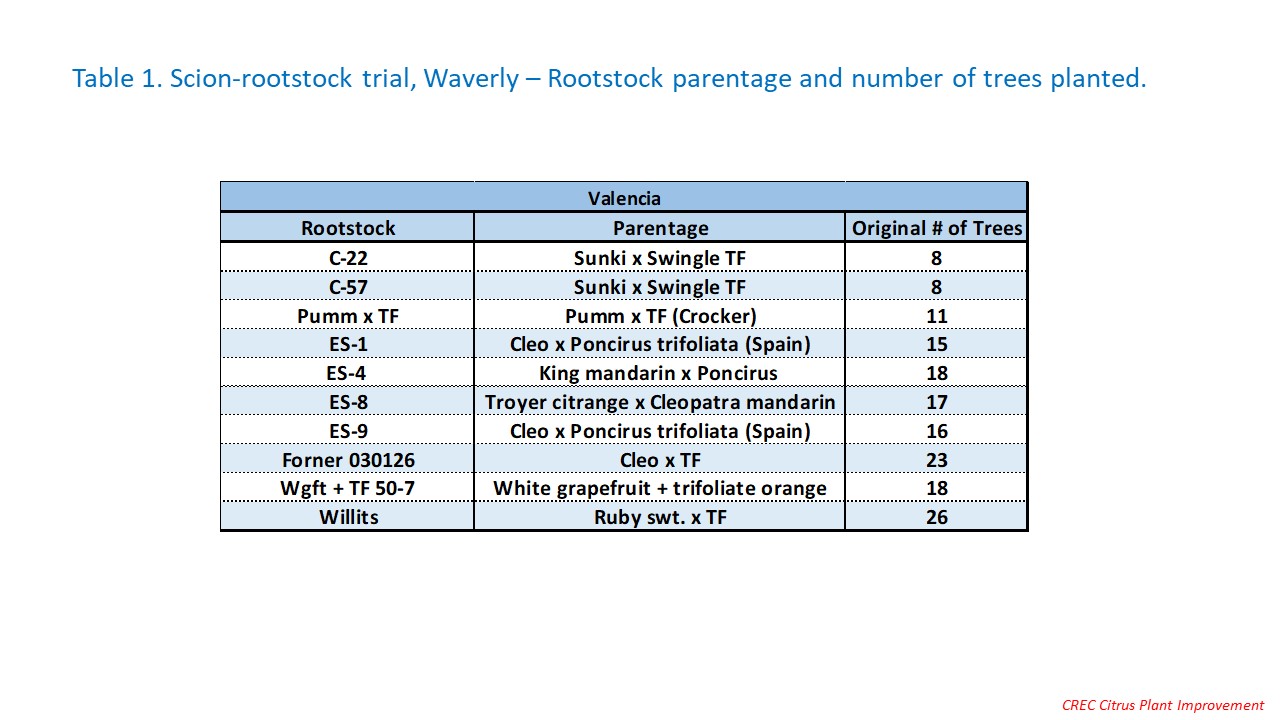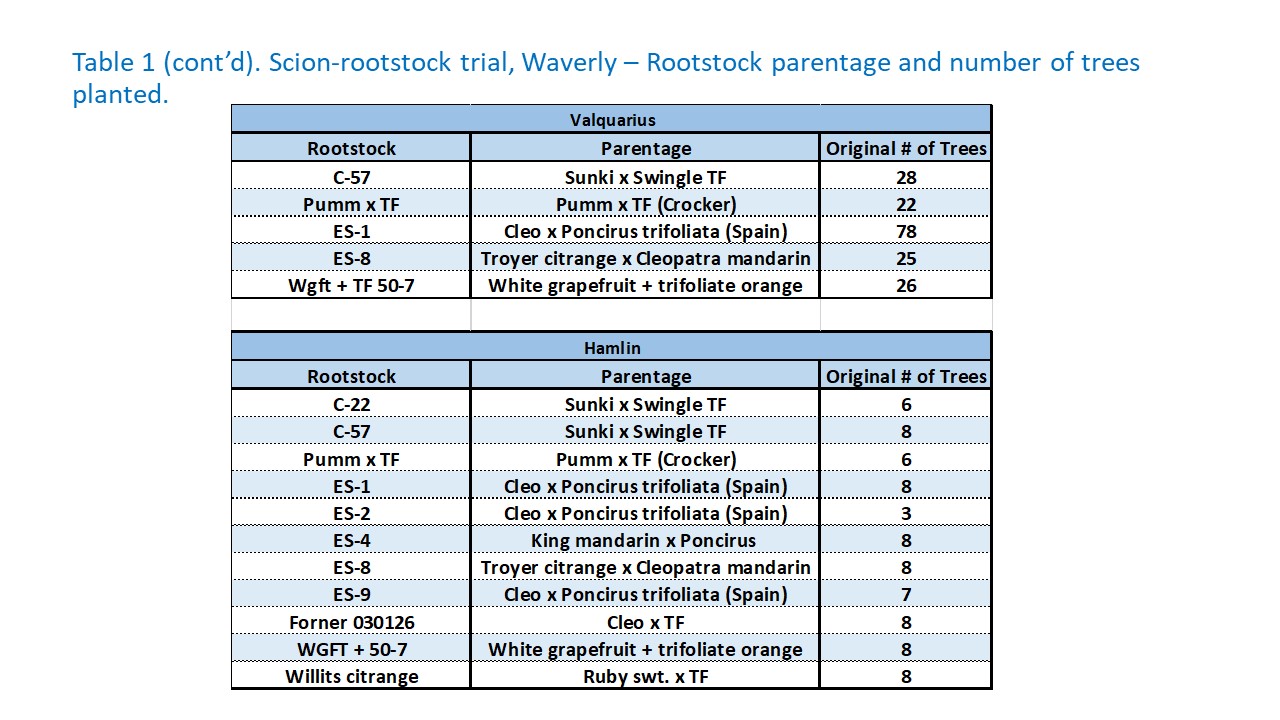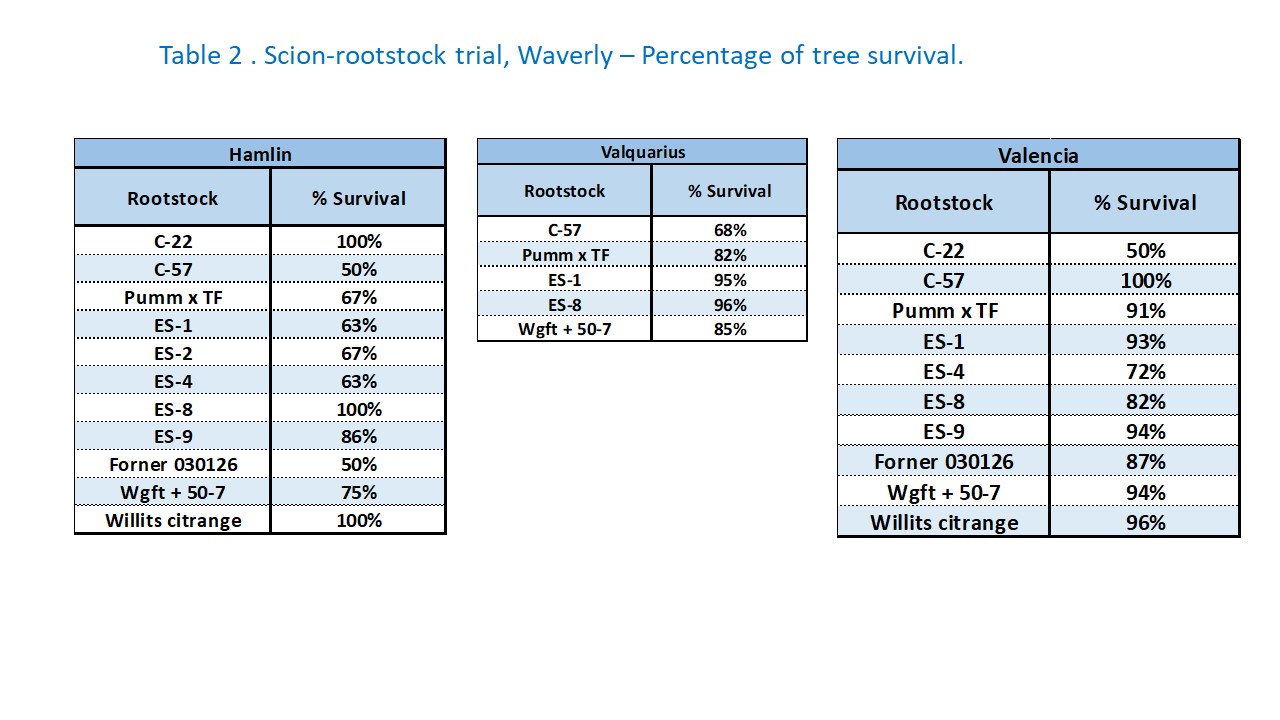Scion-Rootstock Trial, Waverly
Dr. Bill Castle – Dr. Fred Gmitter – Dr. Jude Grosser
June 16, 2021 - Updated
November 22, 2020 - Updated
November 22, 2019 – Revised
December 7, 2018 – Posted
CREC Citrus Plant Improvement
Scion-Rootstock Trial, Waverly - Description
This replicated trial, planted in Waverly, Polk County in 2013, consists of ‘Hamlin,’ ‘Valquarius’ and ‘Valencia’ on 11 rootstocks, including the best rootstocks from the Forner breeding program in Spain, C-series rootstocks from CA, and one tetraploid citrumelo from the UF/CREC breeding program. The goal is to identify superior sweet orange/rootstock combinations for the Ridge based on yield, juice quality and apparent HLB tolerance.
Waverly Scion-Rootstock Trial - Summary
- Location: Waverly, Polk county.
- Scion - Rootstocks: Valquarius – Hamlin – Valencia on 11 rootstocks
- Date planted: June 2013
- Design: Randomized complete-block; 3 replications
- Plot size: 4-20 trees
- Spacing: 12 x 22 ft. = 165 trees/acre
- Data:
- 2015-16: Yield [boxes/tree]
- 2016-17: Yield [boxes/tree] ; HLB and fruit drop ratings
- 2017-18: Yield [boxes/tree]; tree size and HLB rating; juice quality data; PS/acre.
- 2018-19: Yield [boxes/tree]; HLB rating
- 2019-20: Yield [boxes/tree]; HLB rating and tree height [ft.]
- 2020/21: Yield [boxes/tree] and HLB rating; juice quality data.
- 6-year cumulative yield [boxes/tree].
- Trial status: Terminated Spring 2021
Scion-Rootstock Trial, Waverly – Interpretive Summary [from planting to termination, 8 years]
This replicated trial was planted on the Ridge in June 2013 and involved a relatively narrow range of rootstocks. It is one of a few trials planted about the same time throughout Florida to test the C-series from California and some of the Forner rootstocks from Spain along with Willits citrange. Harvesting to gather yield data usually took place once in the season at a compromise time of maturity considering the three scions. The trial was terminated in Spring 2021.
General. The trees got off to a strong start, growing well in the initial years. They began to fruit after 2-3 years and continued to look healthy.
Tree height. When the trial was about 6 years old, most trees were 6-8 feet tall [Fig. 18]. The largest trees overall were those with Valquarius scion reflecting its vigor associated with being a young [juvenile] line. Among the C-series, those on C-57 tended to be the largest regardless of scion.
HLB. In the four years HLB status was rated there was little change across the trial [Fig. 22]. Most trees displayed light visible symptoms. The one exception were the Hamlin trees on ES-2. In the Hamlin trees which are more susceptible, fruit drop was heavier as observed in March [past normal maturity for Hamlin].
Yield. Cumulative yield was highest among trees on C-22, C-57 and Willits citrange for 2 of the 3 scions [Fig. 5]. However, note that each scion was not grown on the same set of rootstocks.
Juice quality. The only full set of data was collected in the 2017-18 season at tree age 5 years. Valencia fruit samples were taken again in the 2020-21 season. Juice quality was reduced by HLB. Rootstock differences were not remarkable.




.jpg)